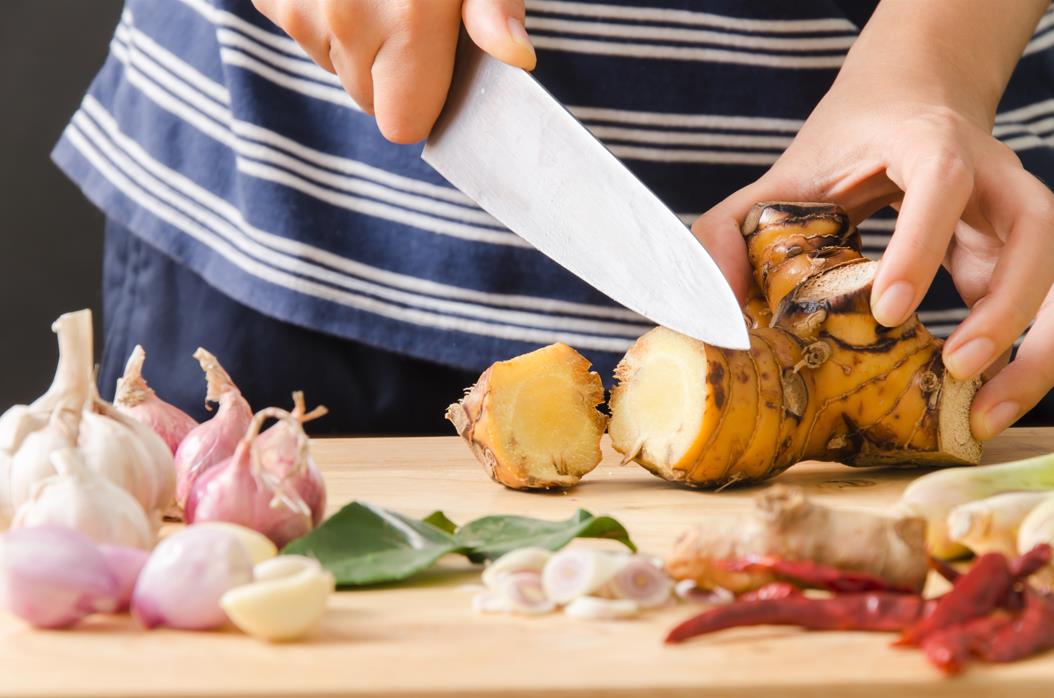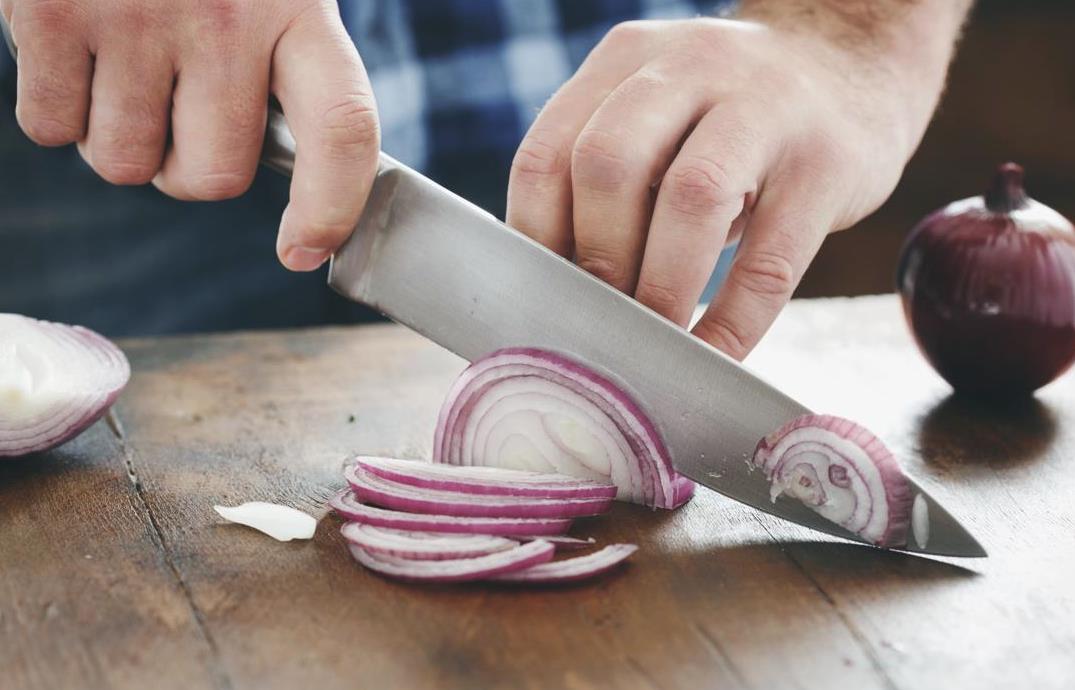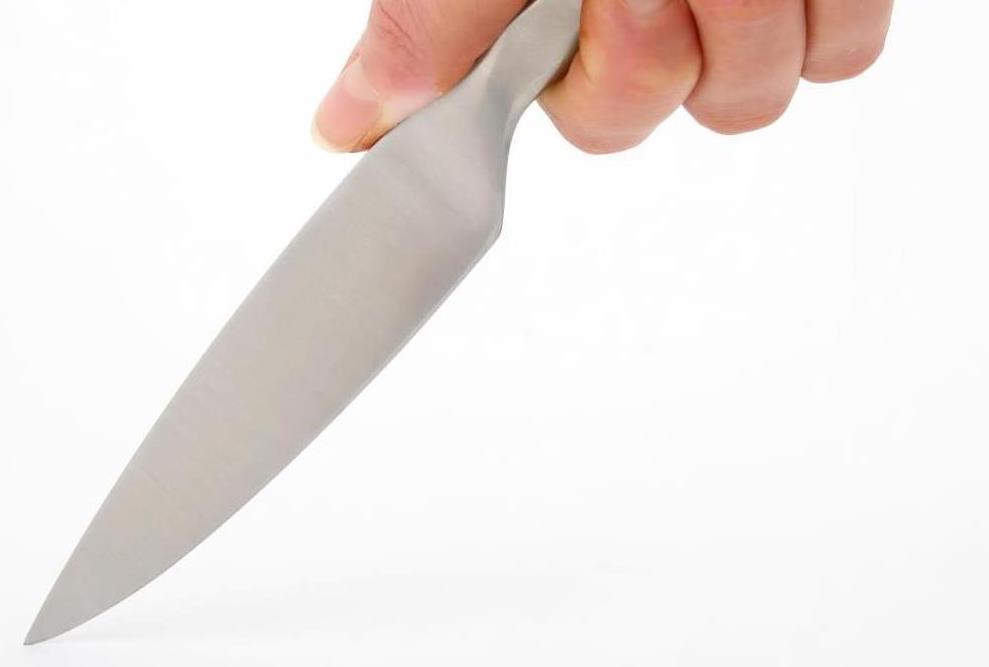Handmade kitchen knives are becoming more trendy every year. Who wouldn’t want a kitchen knife crafted by a dedicated blacksmith using the best materials? It isn’t only the craftsmanship of handmade kitchen knives that make them famous. They are sturdy, strong, and hold a sharp cutting edge a lot better than the overwhelming majority of mass-produced knives.
There are many reasons to consider a handmade kitchen knife, and we’re sure that you have plenty. There isn’t a lack of motive, but where and how. It can get quite challenging to find a proper handmade kitchen knife and have doubts whether it’s actually handmade or not.
As a company that forges handmade kitchen knives, this is our buyer’s guide on everything you need to know before making a purchase.
Table of contents
What is a handmade kitchen knife?
So what makes a kitchen knife handmade in the first place? To answer this question, we first need to look at how knives are made.
There are two main ways of making a kitchen knife or any other knife for that matter in today’s manufacturing. Companies either choose to cut a blade out of a large steel sheet, heat treat it, install a handle, and sharpen it. This manufacturing process is simple and requires the manufacturers to stamp out the blade, perfect for mass producing. Consequently, the knives manufactured through this process are called stamped knives. The manufacturers also have the option to do what we do: forge knives by hand.
Handmade kitchen knives start as steel blocks roughly the size of the blade we want, forged to shape into a blade, and perfected following many procedures to finally what we can call a knife.
Take a peek at how HDMD Knives are made by watching the video below or reading our article on how handmade kitchen knives are made.
Buyer’s guide to handmade kitchen knives
Our buyer’s guide is a summary of the commonly asked questions about handmade kitchen knives, potential ups and downs, and why it might or might not be a better idea to pick a handmade knife over stamped ones.
Handmade kitchen knives vs. stamped kitchen knives
Although handmade and stamped kitchen knives look alike without any design elements added, it’s pretty easy to differentiate a handmade knife from a stamped knife. Here are key attributes of both.
Stamped kitchen knife characteristics
- The entire blade is generally at the same thickness across.
- Lighter in weight compared to a handmade knife.
- Usually don’t have a bolster, whether full or semi.
- Generally flexible and soft, which doesn’t help with edge retention.
Handmade kitchen knife characteristics
- The blade’s spine is usually thicker and tapers down as it goes down to the edge.
- As it’s harder due to forging, it’s also heavier and stronger. This makes handmade kitchen knives hold an edge exceptionally well.
- Some handmade kitchen knives have bolsters; some don’t. It depends on the design of the blade.
By the explanations of the bullet points above, it almost sounds like explaining the pros and cons of a kitchen knife, but it isn’t exactly like that. The notion of handmade knives being better than stamped knives doesn’t apply as much as it used to be.
With improved technology and better steel, stamped knives have come a long way. Just because a blade is stamped doesn’t mean it’s low-quality or a lack thereof. They are sometimes even better than handmade ones.
Some stamped knives have amazing edge-retention and are easier to use for cooks. The above is a simple representation of how to differentiate two differently manufactured knives.
Nevertheless, the general idea that a handmade knife is better and higher in quality applies most of the time.
Handpicked for you
True cutting power in the palm of your hand
Do you need a handmade kitchen knife?
One doesn’t necessarily need a handmade kitchen knife. It comes down to your preferences and the style of cutting. The attributes of handmade kitchen knives can come in handy in specific tasks that require more power and intricacy, like cutting through bones and preparing fish.
If these sound like familiar work, you will undoubtedly benefit from what a handmade kitchen knife has to offer.
Here are a few additional reasons why handmade might be a better pick for you overall than stamped kitchen knives.
- Higher carbon content offers a sharp edge for longer.
- Never warp against whetstone when sharpening.
- The extra weight assists in cutting, requiring minimal effort, which makes it easier on your wrist.
- The bolster provides protection for beginner cooks if it has any.
- You get a better value for your money as they can last for a lifetime.
The durability is a critical deciding factor. When regularly and adequately taken care of, handmade kitchen knives last a lifetime. With stamped knives, you’d need to replace them every few years in most cases.
However, the same can also apply to handmade kitchen knives if you neglect the basic care practices. Regardless of the knife, make sure to look after it to ensure it lasts as long as possible.
The bottom line is you don’t necessarily need a handmade kitchen knife, but it’d be a better pick than a stamped knife. Even then, you might have concerns due to the high price tag that comes with handmade knives. That’s why at HDMD Knives, we try to bring high-quality handmade kitchen knives at an affordable price so that everyone can enjoy their benefits.
Handmade kitchen knife recommendations
HDMD Hand Forged Chef’s Knife

Our hand forged chef’s knife is designed to be long-lasting. Made from the arguably best steel for kitchen knives 65MN high-carbon steel. The blade is designed to resist cracks and chips, making it an exceptional knife for slicing and dicing.
The curved blade allows chopping and dicing in rocking motions while helping you mince ingredients effortlessly. The thick blade makes it convenient for cutting all types of ingredients and suitable for all cooks, whether pro or at home. Learn more about its specs and details below.
Main features of HDMD Hand Forged chef’s knife
The HDMD Hand Forged chef’s knife has a cleaver-like blade with a curved edge. The blade design makes heavy-duty work easier while allowing to create smaller, standard cuts like chopping, slicing, mincing, etc. and makes these efficient as it’s convenient to rock the blade thanks to the edge.
You can think of this knife as a chef’s knife and a cleaver all in one, enabling versatility on your cutting board no matter what you’re preparing.
HDMD Hand Forged chef’s knife advantages
- The unique blade design helps make all kinds of cuts, including those that a typical chef’s knife might be too flimsy for the job.
- The curved edge makes going over ingredients by rocking the blade easier.
- The high carbon content in the blade contributes to edge retention, helping the knife hold its sharpness for extended periods.
HDMD Hand Forged chef’s knife disadvantages
- Those who aren’t experienced with this kind of blade design may have difficulty adjusting at first.
- The knife may feel too big if you’re coming from a chef’s knife under 6-inch or have small hands.
HDMD Serbian Chef’s Knife
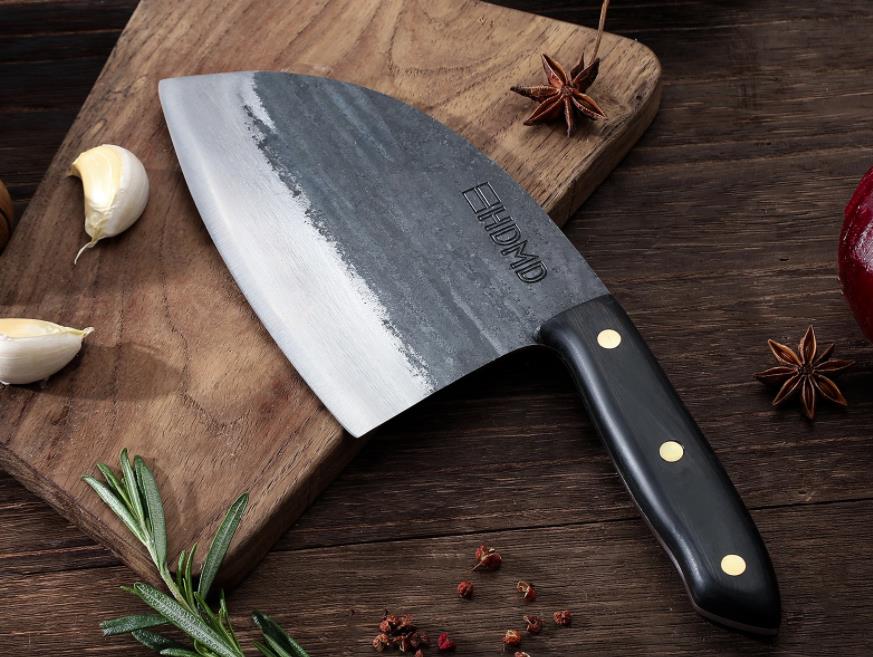
Looking for a more compact knife with a pointy tip? HDMD Serbian chef’s knife might be the one you’re looking for all along.
The HDMD Serbian chef’s knife has a flatter edge design compared to our hand-forged chef’s knife. If you’re used to cutting ingredients in up and down movements (thrust cutting), the extremely sharp edge will give you an easier time and cut as if there was nothing. The weight of the blade also helps in this process as it’s heavier than a traditional chef’s knife.
This handmade kitchen knife is the perfect choice for those working with dense fruits and vegetables while making it ideal for creating slim slices of meats. The slightly lengthier handle (4.7 inches) delivers a comfortable, firm grip – more details on this brilliantly crafted chef’s knife below.
Main features of HDMD Serbian chef’s knife
The HDMD Serbian chef’s knife can be used for all cutting needs. The blade is on the heavier side, making it particularly good at slicing through things that are harder to cut.
Although it has a pretty wide blade, it comes with a pointy tip that you can make incisions to reduce the cooking time of meats and vegetables, along with making slits to break down large cuts of meats into individual parts.
The 6.3-inch long blade paired with a lengthy handle provides a firm control so that you can cut through ingredients that require force without having to worry about the knife slipping out of your hand. This feature is handy in situations where you need to cut dense ingredients and feel confident in every cut.
HDMD Serbian chef’s knife advantages
- The hardened high carbon steel blade has increased durability that resists chipping, cracking, and other potential damages when used for heavy-duty tasks like cutting bones.
- The flatter edge allows slicing most ingredients entirely, ensuring each piece is intact and the same across.
- With its high carbon steel blade, it will develop a patina over time, adding personality to the knife.
- Despite the robust build , the HDM Serbian chef’s knife features a thin blade at 0.3 mm thickness. This helps make intricate cuts.
HDMD Serbian chef’s knife disadvantages
- Unless you’re used to heavier blades, chopping foods in up and down motions can get exhausting.
- The high carbon steel blade needs a more comprehensive sharpening and requires more care than its stainless steel counterparts.
Note that all of our products are shipped to the US for free regardless of the order amount.
Things to consider before buying a handmade kitchen knife
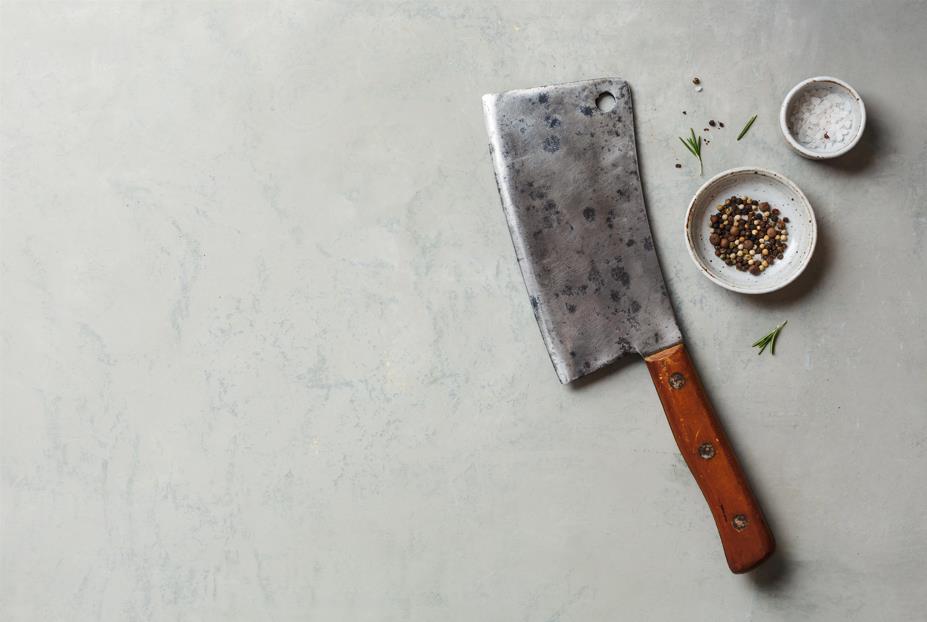
Ask yourself whether the attributes of handmade kitchen knives can be beneficial or disadvantageous to you. This is an easy way to figure out whether or not handmade kitchen knives are for you. Here are other things to consider to understand better if these knives will fit your needs.
- Weight: Handmade kitchen knives tend to be heavier. For example, the Serbian chef’s knife in our store weighs 331 grams. Compared to an average chef’s knife weighing around 250 grams, you might find it heavier.
- Type of steel: Because edge-retention is the most critical aspect of what makes a knife worthy, high-carbon steel is often used rather than stainless steel in most handmade kitchen knives. This type of knife steel gets patina over time, a chemical reaction that prevents the blade from further oxidation like rusting. Although this adds character to the knife, some may see it as a downside. If that’s the case, it’d be a better idea to look for stainless steel alternatives.
- Maintenance: The previous point leads to something important; maintenance and looking after your knife. Due to the type of materials used, the blade of a high-carbon steel knife can build up rust if care is neglected. A handmade kitchen knife like this may demand more from its buyer, but it will last a lifetime with the necessary precautions.
- Price: In almost all cases, handmade kitchen knives cost more than mass-produced, stamped knives. While you can get a stamped chef’s knife for $20 or so, that’s out of the picture with hand-forged knives. See how much you’re willing to spend on a kitchen knife and decide accordingly.
Top brands to consider
There aren’t any big-name handmade kitchen knife brands as they can’t be mass produced on mass. If you ever find yourself wondering where to purchase handmade kitchen knives, a good place to get them would be your local knife manufacturer or sellers on large e-commerce sites like Amazon and Etsy.
If these aren’t convenient, consider popular brands like Wusthof, Misen, Shun, or any other that you trust to see if they offer handmade options.
FAQs on handmade kitchen knives
Are handmade knives better?
In most cases, forged knives are better than stamped ones manufactured at mass. Even the tiniest details matter when a blade is hand forged, and the outcome is generally a better performing knife.
Do handmade knives keep an edge longer?
The handmade knives tend to be harder on the Rockwell hardness rating. Therefore, they keep a sharp cutting edge for longer. However, this also makes them somewhat harder to sharpen. This means a more extended sharpening session, but they will keep their edge for a lot longer once sharpened. So, not much changes if you’re up for a lengthy sharpening session in exchange for a knife that stays sharper.
Why are handmade knives expensive?
Forging a blade is a no-easy task. It can take 15 to 25 hours to make a kitchen knife. The quality of materials used, the overall work put into it, and the sweat of the blacksmiths add up to the price, making handmade kitchen knives a lot more expensive than their mass-produced counterparts.
Should I buy a handmade kitchen knife?
Whether or not you need a high-quality kitchen knife depends a lot on what you demand from a blade in the first place. Most professional chefs use their knives for about 40 hours a week. Compared to a home cook, this is a lot. If you’re using a kitchen knife for more than one hour a day, we highly recommend investing in a handmade kitchen knife that can handle every task you demand from it.
Conclusion
The takeaway from this article is that those who spend a lot of time in the kitchen will most certainly benefit from what a handmade kitchen knife has to offer.
Still, you don’t necessarily need to be a professional chef to have a good quality kitchen knife. Having an excellent performing kitchen knife will make preparing ingredients more enjoyable and give you an easier time. Get yourself a pair of handmade kitchen knife from our collection today.







